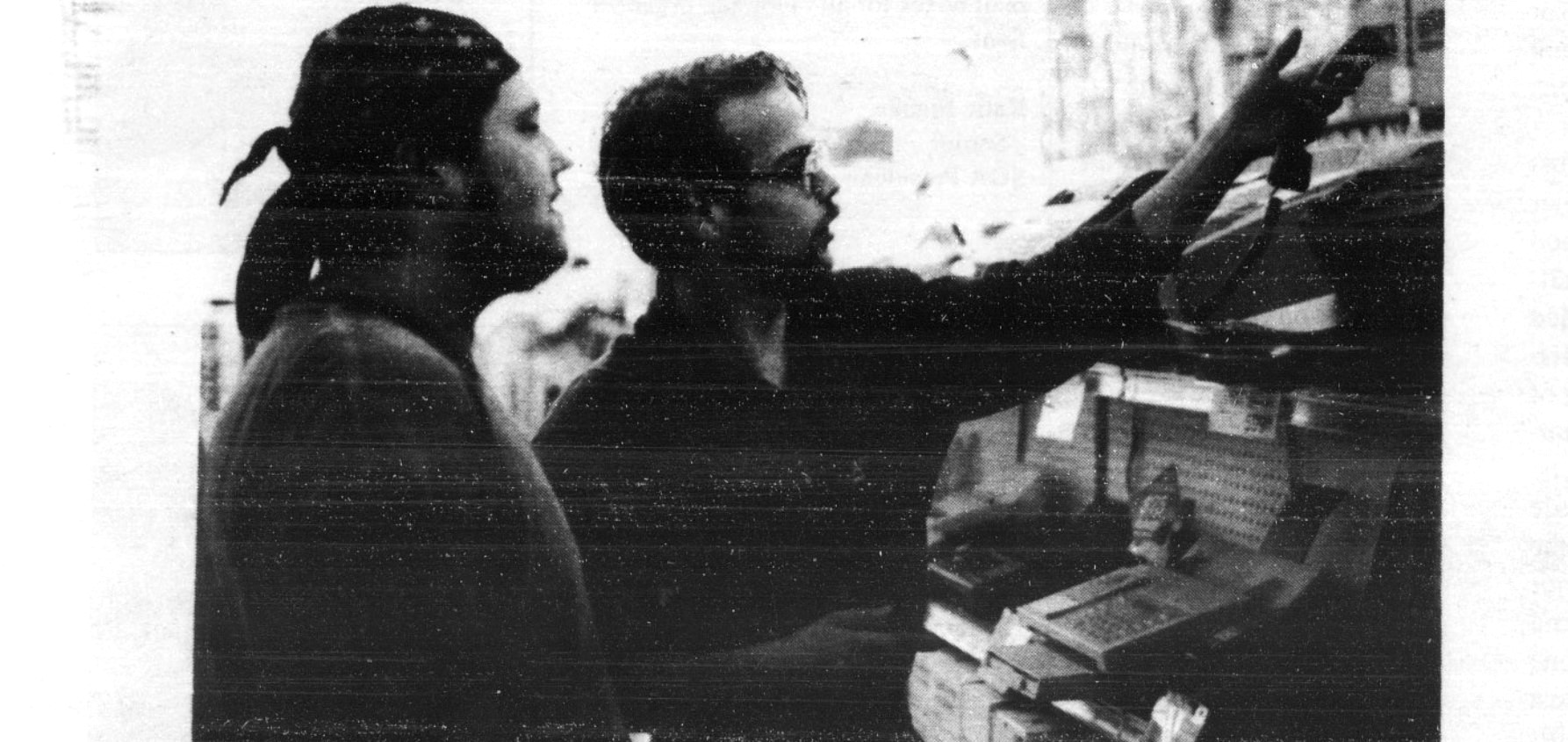Archives are full of old examples of different methods of storing and sharing information whether these be frakturs, index cards or poll books. Each present and organize information in different ways depending on their intended use.

A fax being sent between the twins Annie and Hallie in 1998’s The Parent Trap.
Some information mediums are not as old and yet are still almost obsolete, such as early websites (including these General Assembly campaign webpages from almost twenty years ago), floppy disks and VHS. Although not nearly as celebrated in pop culture as the others, fax machines and fax cover pages also fit neatly into this category.
The telefacsimile machine is older than most people think, but its golden years have come and gone and with it a particular form of information sharing – the fax cover sheet. In fact, a fax cover sheet is more than just information, it is every archivist’s and librarian’s first love. It is metadata, which can be defined as information about information.
Now if we want to send images, documents or flyers, it is quite easy to send them as attachments to texts or emails. But in the days before the internet and camera phones, the options to send images “instantaneously” were much more limited. People had been sending telegrams as a way to transport textual information long-distance over wires since the 1840s by converting each letter into sounds that were deciphered on the other end. In the early days, this involved a human on either end both to input the data as sounds and to decipher what came over the wire back into human readable letters.
By the 1950s, computers could decipher and print the message sent over telephone wires without a human having to “translate,” printing out the final message without the recipient needing to know what the intervening signals meant. Fax machines allowed users to send a facsimile (or copy) of an image over the telephone line in a similar manner. The machine “scanned” the page on one end and sent the information over the telephone line where it was printed out on a similar machine at the other end. This is a very simplified explanation – the video on the right gives a more robust explanation.
If you were sending a fax to a close friend or family member, you may have called them ahead of time to let them know it was coming – especially if they did not have a dedicated phone line for their fax machine. Just like early dial-up internet, receiving a fax temporarily tied up the phone, so unless you had a phone line just for your fax machine it generally did not make sense for it to stay connected 24/7. But even if they didn’t know it was coming, most of the time you could assume they would know the context around what was being sent.
However, if you were going to send a fax to a large company that was constantly receiving faxes it was more important that you let them know what was being sent. If you were faxing a job application and included a writing sample for example, you didn’t want it separated from the rest of your application packet. You needed to let the recipient know who was sending the information, what it was about, how many pages were included and how you could be contacted. This is the information about the information you were sending, the metadata.
Sometimes you could write that information directly on the page you were sending over, especially if it was only one page. A lot of people did, especially for more informal inter-office faxes. In fact, Post-it sold a branded stamp so users could legibly write and easily locate that information on a page, serving a function similar to the subject line and header of an email.
In more formal situations however, you wanted a cover page that laid out all the information without detracting from the application, brochure, or report you were sending. Many businesses created fax cover pages with their logos on it. Given that fax machines had pretty basic black and white printers, for the most part they were not very elaborate but every once in a while someone went all out!
The following examples all come from constituent correspondence with Governor Wilder’s office in 1993. Although hardly masterpieces, they are a fun look back to the early tech aesthetics and are very important in conveying information to both the past recipient and current researchers. Without a cover sheet we might not know why there was “a draft of a message…for the contestants of the National Chicken Cookoff” in the Governor’s papers.
Header Image Citation
Shumate, John James. “Off-Campus Employment Offers a Working Alternative.” The Critograph. November 10, 1994, sec. Lifestyles. https://virginiachronicle.com/?a=d&d=COG19941110.1.6&srpos=153&e=——-en-20–141–txt-txIN——–
Original Caption: Faxing – Senior Gage Renzi explains features of a fax machine to junior Beck Hill. Renzi works at Staples selling computers.

























